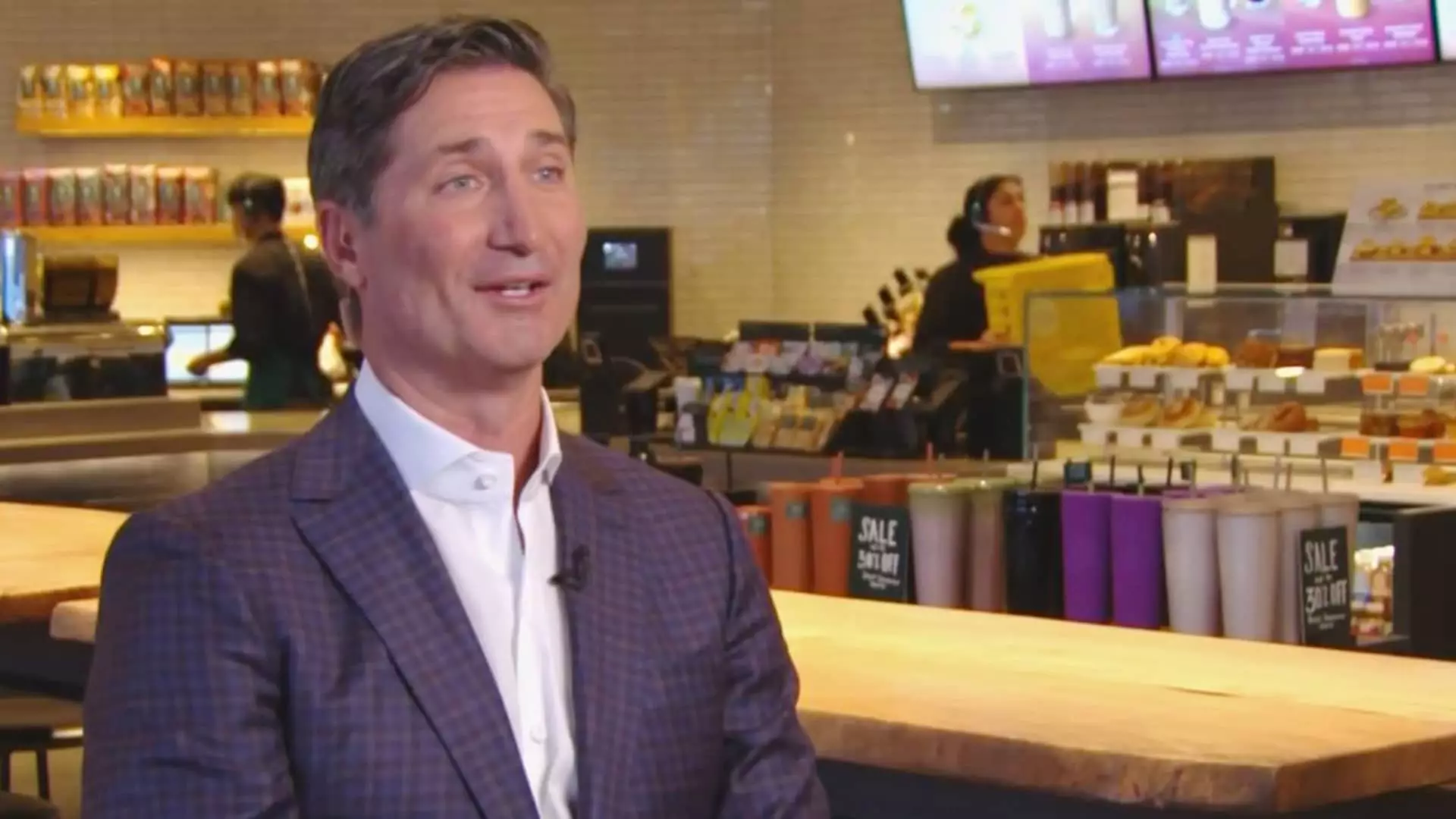Starbucks has long been synonymous with high-quality coffee and a welcoming environment, yet recent quarterly reports have uncovered a troubling trend: declining sales for three consecutive quarters. CEO Brian Niccol recently outlined his strategy to address this downturn during a conference call, underscoring the urgent need for renewed focus both on operational efficiency and customer satisfaction. As Starbucks endeavors to reclaim its status as a premier coffee destination, it is clear that significant changes are on the horizon.
The root of Starbucks’ challenges can be traced back to a shift in consumer expectations. With more than 30% of transactions now coming from mobile orders, the convenience of technology has both transformed the coffee-buying experience and complicated it. Customers expect swift services, and Niccol is keenly aware that the current setup leaves something to be desired. His turnaround strategy aims not only to restore the company’s momentum but also to enhance the customer experience fundamentally.
A critical component of Niccol’s plan is the objective to deliver customized drinks in under four minutes. This benchmark should be achievable; currently, only about half of transactions meet this timeframe. To address this lag, Starbucks will implement several operational tweaks aimed at streamlining the ordering process.
A major part of this plan involves recalibrating how mobile orders are handled. Niccol acknowledges that, while efficient mobile ordering can significantly enhance the customer experience, it has also led to logistical bottlenecks—particularly at the counter. The goal is to refine mobile app functionalities so that customers have a clearer understanding of when their drinks will be ready. Additionally, the intention to restrict the level of customization for mobile orders is aimed at reducing complexity; excessive personalization can bog down service efficiency and lead to inconsistencies.
Simultaneously, Starbucks aims to streamline its offerings. By adopting a “fewer, better” approach, the company desires to simplify its menu, making it easier for baristas to execute orders more efficiently while delivering consistency. The current array of menu items has been criticized for its long tail—those offerings which, while diverse, are not frequently requested and can lead to delays in service.
Niccol’s admission that certain menu items might not have made the cut if a four-minute standard had been enforced signals a shift toward prioritizing efficiency over variety. While die-hard fans of the more experimental menu items may be dismayed, the overarching goal is clearer: faster, high-quality service that enhances overall customer satisfaction.
An equally important focus is restoring the ambiance of Starbucks as a community gathering place. Over the years, the company has drifted from its original appeal as a “third place”—a welcoming environment where patrons can work and socialize. Niccol envisions environments that invoke warmth and comfort, reinstating features such as ceramic mugs and cozy seating to encourage lingering.
Recent architectural decisions favoring pickup-only locations have been met with mixed response, as stingy seating has diminished the inviting atmosphere that once drew people in. Niccol is determined to reorganize even these locations, ensuring they embody a sense of community and comfort despite their utilitarian design.
The CEO’s emphasis on marketing reflects a broader understanding of the brand’s positioning. Niccol aims to target a wider audience beyond just Starbucks Rewards members, hoping to effectively communicate the quality and uniqueness of Starbucks coffee. The decision to scale back on discounts underscores a belief that promotions can dilute brand perception and lead to operational strain on staff.
Using his extensive marketing experience from previous companies, Niccol introduced a more strategic approach, leveraging insights from industry best practices to breathe new life into Starbucks’ promotional efforts.
One of the more immediate changes on the horizon is the elimination of the surcharge for milk alternatives, a decision that addresses growing consumer demand. Starting November 7, this will signify a broader attempt to realign pricing strategies to counter customer pushback against rising costs.
Starbucks leadership has indicated that they do not plan to adjust North American prices for the upcoming fiscal year, suggesting a commitment to bolster customer loyalty and reconquer lost market share. With thoughtful adjustments in both operations and marketing, Starbucks aims not only to survive but thrive once again in an increasingly competitive coffee landscape.
Brian Niccol’s multi-faceted strategy aims to restore Starbucks as a premier coffeehouse experience through operational enhancements, thoughtful menu redesign, environmental shifts, and a revitalized marketing approach. The road ahead calls for adaptation, but if executed effectively, these changes can help Starbucks regain its place as an industry leader.

